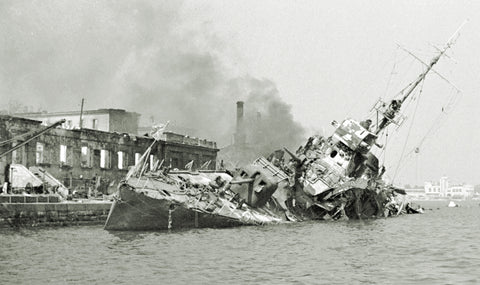
The Soviet’s Not New, But (Not Really) Improved Destroyer
As early as the late 1920s, the rapidly industrializing Soviet Union recognized a need for heavily armed naval destroyers to patrol the Baltic and Black seas. The Soviets soon developed the Project 7 destroyer, whose armaments included antiaircraft and machine guns, mines, depth charges, and torpedoes. After a mine strike in 1937 disabled a British destroyer off Spain’s coast, Stalin ordered class-wide changes to give his ships better odds of escaping after similar damage. The Soviets refurbished existing 7s as well as those under construction into the tweaked Project 7U (the “U” standing for the Russian word for “improved”), with revamped boiler systems and heavier hulls. These changes met Stalin’s demands for survivability but also resulted in increased weight, lower fuel capacity, reduced range—and delayed delivery. When Germany invaded in 1941, only two of the 18 7Us eventually produced were in service.
7U destroyers joined the Soviet Black Sea Fleet for its 1941–42 attack on Constanţa in Romania and defense of Odessa and Sevastopol. Axis air power and—ironically—Soviet mines put most 7Us out of action; the last survivor, Soobrazitelny (depicted here), was scrapped in the 1960s, leaving the fleet a memory.
